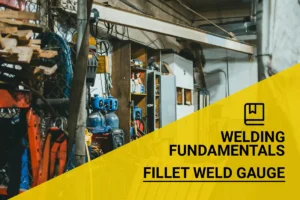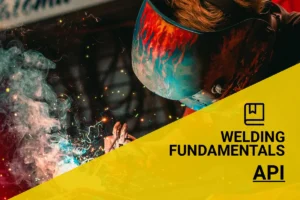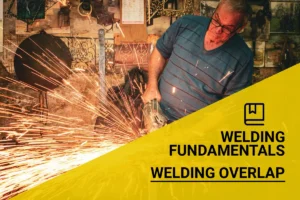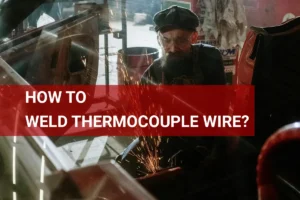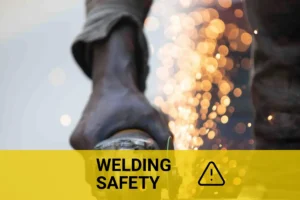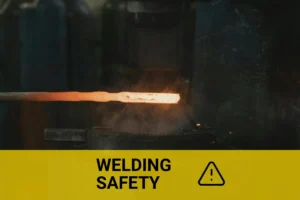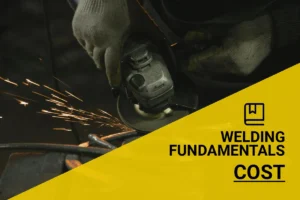What is Fusion Welding? Understanding the Process, Types, and Applications
Published on: May 13, 2025 | Last modified: March 4, 2025
By: Tyler James
Fusion welding is a process where materials join by melting them together. It creates a strong bond when they cool and solidify.
I get asked all the time about what is fusion welding? Understanding this technique is crucial for producing strong welds. Personally, I’ve seen projects fail due to improper fusion welding, so it’s vital to follow best practices to get it right.
In this guide, you’ll discover how fusion welding works, the different types, the steps to perform it, factors that affect the process, and common issues to watch out for. You’ll also learn about aftercare and inspection, applications, and even alternatives. We’ll explore questions like which materials can be fusion welded together successfully and what is coalescence in welding.
Contents
- What is Fusion Welding?
- How Does Fusion Welding Work?
- Types Of Fusion Welding
- Steps to Perform Fusion Welding
- Factors Affecting Fusion Welding
- What Could Go Wrong: Common Issues
- Aftercare, Inspection, and Advanced Tips for Fusion Welding
- Advanced Techniques in Fusion Welding
- Applications Of Fusion Welding
- What Are the Alternatives to Fusion Welding?
- Frequently Asked Questions (FAQs)
- Conclusion
- References
What is Fusion Welding?
Fusion welding involves melting the base metals to join them. This process creates a strong bond through coalescence, making it ideal for applications like pipes, bridges, and cars. It’s reliable, cost-effective, and ensures durability. A critical aspect to consider in these projects is the cost of consumables, such as welding rods used in fusion welding.
How Does Fusion Welding Work?
Fusion welding connects materials by melting them together. You heat the metal until it reaches its melting point, around 1,300°C (2,372°F) for steel, then let it cool and solidify. This creates a strong bond between the pieces, achieving joint strengths up to 90% of the base metal’s strength.
One technique in fusion welding is coalescence, where molten metal from separate pieces combines as it cools. This process requires precise temperature control and appropriate filler materials.
I once watched a fusion welding demonstration where the welder highlighted the importance of the fusion zone, the area where the weld solidifies and forms the joint. It was fascinating to see how different materials, like steel and aluminum, can be fusion welded together using the right techniques.
Types Of Fusion Welding
What are the types of fusion welding?
-
Arc Welding
Arc welding uses an electric arc to melt metals. It’s popular because it creates a strong bond. You need an electrode, a power source, and the materials being welded. The extreme heat from the arc melts both the filler and base metal to form a solid connection. To accomplish a variety of welding tasks, one might consider utilizing a multi-process welder for its versatility and efficiency.
-
Gas Welding
Gas welding uses a flame from burning gases like acetylene to fuse metals. This method is also a fusion welding technique. To gas weld, mix oxygen with fuel gas to create a flame that melts the metal edges, allowing them to fuse as they cool.
-
Laser Welding
Laser welding employs a focused laser beam to melt the material at the joint. It’s efficient and highly accurate. To laser weld, direct intense light energy onto the workpiece, melting it quickly and creating a strong bond as it cools.
Exploring how to make a welding machine using only accessible resources can significantly broaden your understanding and skills in this field. Discover the process for building a welding machine using a 12v battery.
-
Resistance Welding
Resistance welding joins metal pieces through heat generated by electrical resistance. It’s a fusion welding method. To resist weld, pass an electric current through the workpieces while applying pressure, melting them together at the contact point.
-
TIG Welding
TIG (Tungsten Inert Gas) welding uses a non-consumable tungsten electrode. It provides a clean weld, making it essential. To TIG weld, create an arc with the tungsten electrode while feeding filler material into the molten puddle, achieving a precise joint.
We’ve wrapped up the various types of fusion welding here. Next up, we’ll look at the steps to perform fusion welding.
Steps to Perform Fusion Welding
Here’s how to perform fusion welding effectively.
-
Prepare the Materials
Clean the surfaces to be welded. Remove rust, paint, or debris to ensure a solid bond. Align the joint area precisely; a snug fit reduces the heat needed for a strong weld.
For steel, preheat to about 100°C (212°F). For aluminum, clean it with a solvent to remove oxidation, which can hinder your work.
-
Select Equipment
Choose the right welding machine for your project. For material thickness, consider a MIG (Metal Inert Gas) or TIG (Tungsten Inert Gas) welder. Adjust the voltage and current settings for optimal results—typically, 80-180 amps work well for thinner materials. Always consult the machine’s manual for guidance. Exploring the different current types can expand your knowledge of DCEP in welding.
If welding aluminum, use a spool gun for smooth feeding. For thicker metals, don’t skimp on a multi-process machine for greater versatility and efficiency.
-
Set Up Workspace
Organize your workspace for safety and efficiency. Ensure proper ventilation and a flat work surface. Keep tools and materials within arm’s reach to minimize unnecessary movements. A clean environment prevents accidents and keeps your focus sharp.
Use clamps to secure materials. This stabilizes the workpiece and reduces warping during welding.
-
Execute the Welding Process
Start your welder and maintain a steady hand and angle, typically around 15-20 degrees. Aim for a consistent travel speed of about 2.5 to 3.0 inches per minute (6.35 To 7.62 Cm/min) for even heat distribution. Don’t rush; allow the metal to melt for a solid fusion.
Adjust your speed based on joint and material type. Thicker sections may require slower travel to accommodate heat buildup. With practice, you’ll learn to adjust your technique as needed.
-
Inspect Welds
After welding, inspect your work. Look for consistent bead appearance and solid penetration. Grind down welds for a cleaner finish if necessary. Ensure there are no voids or defects; everything should feel smooth.
Don’t hesitate to correct imperfections; they can compromise strength. A strong fusion weld significantly enhances durability, so strive for perfection.
That covers the steps involved in fusion welding. Let’s now take a look at the factors that influence fusion welding.
Factors Affecting Fusion Welding
What factors impact fusion welding? Understanding these elements is crucial for quality results.
-
Material Composition
The materials you’re welding greatly affect the process. Different metals have varying melting points; steel melts at about 1,370°C (2,500°F), while aluminum melts around 660°C (1,220°F). Knowing the right combination enables effective coalescence in welding.
-
Heat Input
Heat input determines weld quality. Too much heat can cause warping or distortion, while too little won’t melt materials properly, leading to weak fusion. Maintaining a consistent heat of 200-500 kJ/m (600-1,500 Kj/ft) is essential.
-
Weld Joint Design
A good weld joint design is crucial for strong welds. Designs with proper fit-up minimize gaps, influencing how well the materials fuse. Joints should allow smooth heat distribution for effective fusion, especially in complex shapes. It’s important to understand the technology behind welding machines and how they affect these designs, particularly when considering DC inverter welding machines.
-
Welding Speed
Your welding speed dictates penetration and fusion quality. If you’re too fast, you might not achieve a good melt; too slow, and you risk burning through the material. A typical speed is around 150-300 mm/min (6-12 Inches/min), which is essential for proper welding guidance in your projects.
-
Shielding Gas Composition
The choice of shielding gas affects arc characteristics and protects the weld pool. For example, argon is excellent for aluminum, while carbon dioxide suits steel. A proper mix ensures a clean weld and minimizes defects. For those involved in welding projects, knowing how to read weld blueprints can significantly improve the understanding of such technical processes and ensure precise outcomes, further explained in the welding blueprints guide.
You should now have a good understanding of the elements influencing fusion welding. In the next part, we’ll discuss potential problems.
What Could Go Wrong: Common Issues
Now, let’s look at some common issues in fusion welding.
-
Inadequate Penetration
In fusion welding, inadequate penetration occurs when the weld metal doesn’t fuse properly with the base metal. You can spot this through visual inspection. To fix it, increase the heat or adjust the travel speed. A penetration depth of 4 to 8 mm (0.15 to 0.31 in) typically works. For those interested in understanding more about specific welding techniques, 3G welding provides insights into vertical position welding and its applications. Learn more about 3G welding positions.
-
Porosity in Welds
Porosity, characterized by small pores in the weld bead, can appear in fusion welding. Using clean materials and the right shielding gas helps. Visual inspection and X-ray testing can reveal these issues. Understanding what causes porosity in welding can enhance weld quality significantly.
-
Undercutting
Undercutting creates grooves at the base of the weld. You can identify it by examining the weld profile. To prevent this, adjust the arc length and travel speed.
-
Cracking
Cracking usually happens in the heat-affected zone. Look for fissures or breaks, often caused by rapid cooling. Control the cooling rate and avoid using high-strength materials to tackle this issue.
-
Inconsistent Weld Bead
An inconsistent weld bead shows problems like uneven width and height, identifiable while welding. Balance your travel speed and electrode angle for better results.
We’ve wrapped up potential problems in fusion welding here. Next up, we’ll look at aftercare, inspections, and advanced tips.
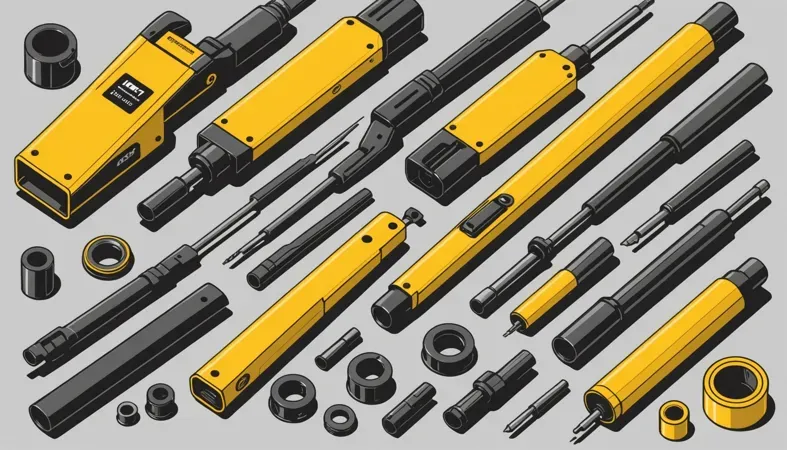
Aftercare, Inspection, and Advanced Tips for Fusion Welding
Here’s straightforward advice to keep your fusion welding projects in top shape.
Aftercare Tips
After fusion welding, check the cooling temperature immediately. It should be between 15°C and 30°C (59°F and 86°F) around the weld area. Use a soft cloth to gently wipe off any residue from the weld metal and surrounding area to prevent contamination. Oily or dusty surfaces can compromise your results, so always keep the area clean.
Inspection Methods
Start inspection by looking for cracks in the weld bead at a 45-degree angle. Use a dye penetrant, like Radiant’s D-592, to reveal subsurface defects. I use a digital caliper to measure bead width—aim for a width of 3 mm (0.12 In) for most metal thicknesses. To ensure high-quality results, arc welding techniques are crucial for welders to master.
Expert Tips
I recommend tuning your welder to the specific parameters of the base material, paying close attention to voltage settings beyond standard ranges. Always run a test weld on scrap material, especially when using mixed filler materials like 308L with stainless steel. Keeping a journal of the specific settings that worked helps you improve future projects.
Advanced Techniques in Fusion Welding
Let’s dive into some advanced techniques that can elevate your fusion welding skills.
Preheating Before Welding
- Preheating is crucial for certain materials, especially high-carbon steels. Heating to around 100°C (212°F) helps reduce stress and prevent cracking during welding.
- For larger sections, consider preheating to 150-200°C (302-392°F) based on the thickness of the material you’re working with.
Post-Weld Heat Treatment
- After welding, applying controlled heat can relieve stress and enhance toughness. A common practice is heating to about 600°C (1,112°F) and then slowly cooling it.
- This treatment is especially effective for thick welds or high-strength alloys, improving durability and performance.
Understanding Joint Configurations
Choosing the right joint design is key to successful fusion welding. Here are some common configurations:
| Joint Type | Description | Common Use Cases |
|---|---|---|
| Butt Joint | Two pieces aligned edge to edge. | Ideal for pipe welding and structural work. |
| Lap Joint | One piece overlaps another. | Used in sheet metal applications. |
| Tee Joint | One piece is perpendicular to another. | Common in frameworks and assemblies. |
Control of Heat Affected Zone (HAZ)
- The HAZ is crucial in fusion welding. It’s the area around the joint that experiences changes in microstructure due to heat.
- To minimize issues, manage your heat input diligently; aim for less than 200-300 kJ/m (600-1,000 kJ/ft) of energy input to maintain material integrity.
Applications Of Fusion Welding
I’ve seen fusion welding excel in many areas. It’s versatile and efficient. Here are some specific applications:
- Aerospace Components: Used to join aluminum and titanium parts. It’s crucial for structural integrity at high altitudes and is popular due to safety requirements.
- Pipelines: Applied to fuse plastic and metal pipes, ensuring leak-proof joints. This makes it popular in the oil and gas industries.
- Automotive Manufacturing: Commonly used in body and chassis assembly. It delivers strong bonds that can withstand impacts, enhancing vehicle safety.
- Shipbuilding: Utilized for steel hull construction. Fusion welding creates robust seams that endure harsh marine environments, making it essential in the maritime industry.

What Are the Alternatives to Fusion Welding?
Several effective methods achieve similar results to fusion welding. For example, mechanical joining techniques, such as rivets and bolts, are often preferred for their ease of use and reversibility. Adhesive bonding, like epoxy or polyurethane, works wonders for lightweight materials or where heat-sensitive components exist.
In some cases, non-fusion welding methods like electrofusion welding are ideal, especially for plastic pipes. Each method has strengths; I’ve found that selecting the right one depends on materials, environment, and the desired outcome. Have you considered combo welding for its versatility?
Frequently Asked Questions (FAQs)
Now let us look at some questions I typically get asked about fusion welding.
What is Meant by Fusion Welding?
Fusion welding means using heat to join parts, melting the edges together. This method often involves high temperatures; for example, over 3,200 °C (5,792 °F) is typical for arc welding. Understanding the different types of fusion welding is essential, as it’s efficient and creates strong bonds between metals.
Understanding the costs involved in welding can be crucial, especially when it comes to the cost of MIG welding gas, which plays a significant role in the overall expense.
Is Fusion Welding the Same As Arc Welding?
No, fusion welding isn’t the same as arc welding, though arc welding is a type of fusion welding. In arc welding, an electric arc generates heat. This method usually uses around 100–200 amps for thick materials, making it effective for heavy-duty projects.
What is Coalescence in Welding?
Coalescence in welding refers to the process where two materials join together permanently. It happens when the heat causes the base materials to melt and fuse at the joint. This process ensures material integrity and typically delivers superior strength.
What is the Difference Between TIG and Fusion Welding?
The primary difference between TIG welding and fusion welding is the method of delivering heat. TIG welding uses a tungsten electrode and can require filler materials, while fusion welding focuses solely on melting parts together without filler. TIG often works well for thin sheets due to precision.
Which Materials Can Be Fusion Welded Together Successfully?
Materials like steel, aluminum, and certain plastics can be fusion welded together successfully. Specifically, joining steel often holds up to high stress and can withstand temperatures of up to 1,200 °C (2,192 °F). Understanding material compatibility is crucial for strong welds.
What is Synergic Welding?
Synergic welding involves balancing voltage and wire feed speed automatically. This technique streamlines the welding process, enhancing quality and efficiency. It results in smoother welds and minimizes human error, making it a popular choice in high-volume manufacturing.
What is the Fusion Zone in Welding?
The fusion zone in welding is the area where metals melt and join. This zone’s size depends on heat input and material thickness. Understanding the fusion zone is critical for controlling weld quality, which is often assessed through tests like tensile strength.
What is Electrofusion Welding?
Electrofusion welding is a method using electrical resistance to melt the materials at the joint. This technique generally applies to polyethylene pipes and provides strong connections. It’s particularly effective, as it reduces the need for additional fittings and minimizes leaks.
Conclusion
That’s everything I wanted to share with you. We covered what fusion welding is, how it works, different types like electrofusion and synergic welding, steps to perform it, and factors that can affect the weld quality. We also touched on common issues, aftercare, inspection tips, many applications, and even alternatives to fusion welding.
So, what is fusion welding? It’s the process where heat creates a bond between materials. We discussed methods, materials that can be joined successfully, and coalescence techniques. Wishing you success in your welding projects as you explore these insights into all things fusion welding.
For further information on welding techniques and processes, feel free to explore What is Welding.
References
- American Society of Mechanical Engineers. (2019). ASME Section IX: Welding and Brazing Qualifications. New York, NY: ASME.
- Welding Institute (TWI): https://www.twi-global.com
Tyler is a passionate DIY welder and self-taught metal artist with years of hands-on experience transforming raw materials into functional and artistic creations. Specializing in MIG welding, Tyler crafts everything from custom furniture to outdoor sculptures, blending creativity with technical skill. Committed to making welding accessible, Tyler shares practical insights and project inspiration to help beginners and hobbyists confidently explore the world of metalworking.
Adhesive Bonding, Coalescence, Fusion Welding, Metal Joining, MIG Welding, Pipe Welding, Welding, Welding Applications, Welding Inspection, Welding Techniques
